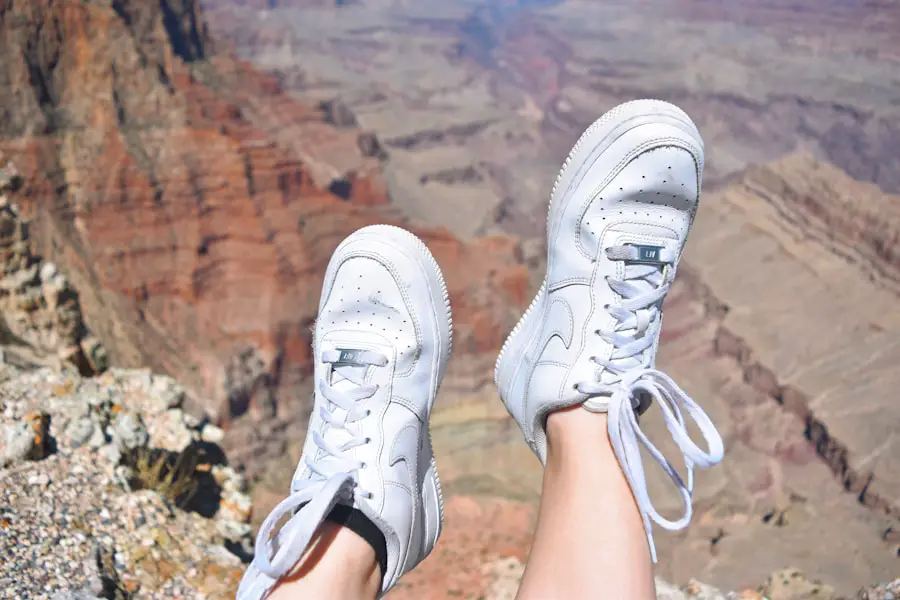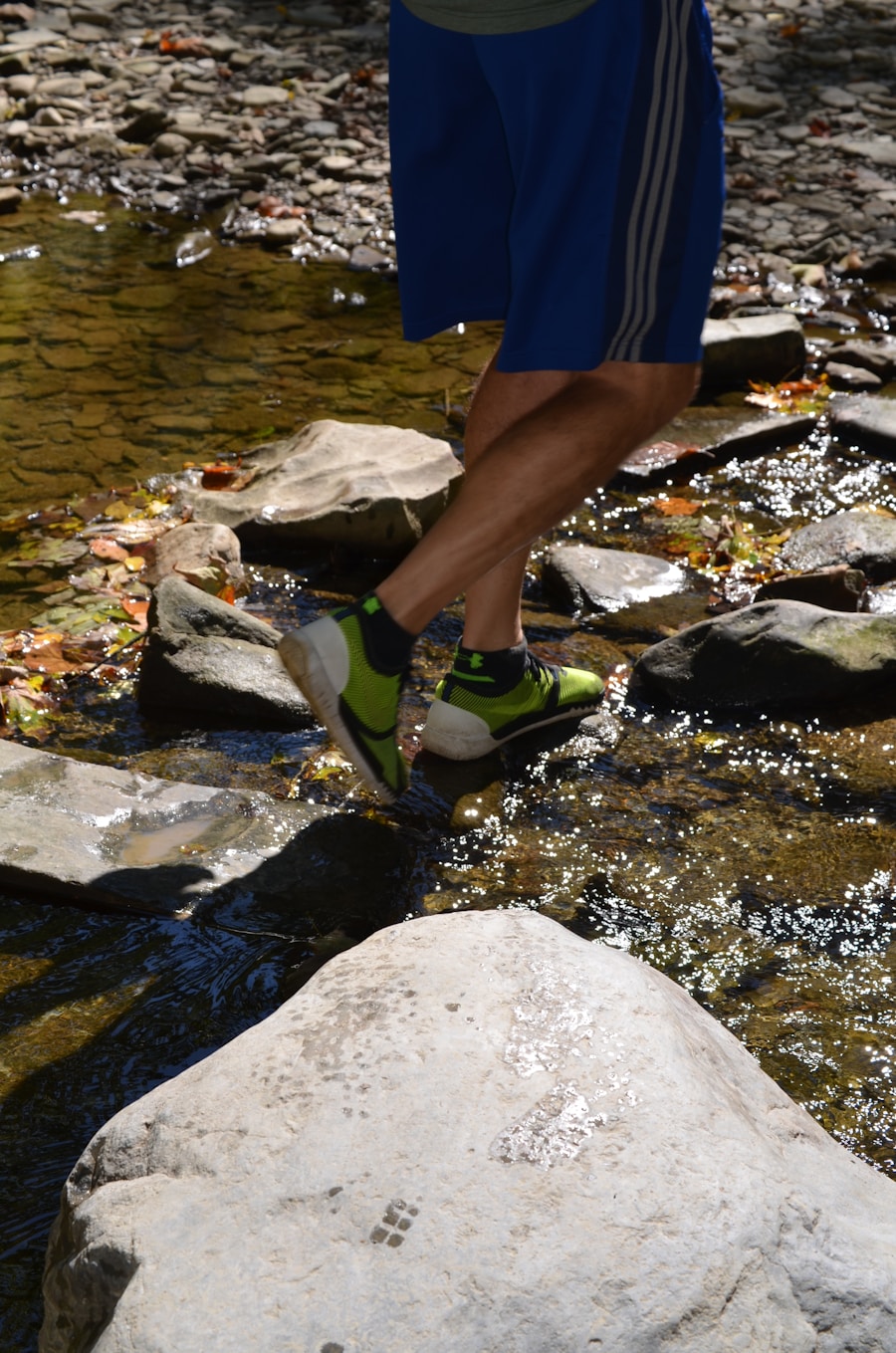Hiking is an activity that invites individuals to explore the great outdoors, traverse diverse terrains, and immerse themselves in nature’s beauty. While traditional hiking boots have long been the go-to footwear for this pursuit, an increasing number of outdoor enthusiasts are considering running shoes as a viable alternative. The appeal of running shoes lies in their lightweight design, breathability, and comfort, which can enhance the hiking experience, especially on well-maintained trails.
However, the suitability of running shoes for hiking is a topic of debate among seasoned hikers and outdoor experts. The evolution of footwear technology has led to the development of specialized running shoes that offer features such as cushioning, flexibility, and traction. These attributes can be beneficial when navigating various terrains, from rocky paths to muddy trails.
As more hikers seek to balance comfort with performance, understanding the nuances of running shoes in the context of hiking becomes essential. This article delves into the differences between running shoes and hiking shoes, explores the pros and cons of using running shoes for hiking, and provides guidance on selecting the right pair for your next adventure.
Key Takeaways
- Running shoes are designed for running on smooth surfaces, while hiking shoes are designed for rough and uneven terrain.
- Running shoes are lighter and more flexible, while hiking shoes are sturdier and provide more ankle support.
- Pros of wearing running shoes for hiking include breathability and comfort, while cons include less traction and support on rough terrain.
- When choosing running shoes for hiking, look for ones with durable outsoles, good traction, and adequate support for the ankles and arches.
- To prepare running shoes for hiking, consider adding insoles for extra support and traction, and breaking them in before the hike.
Differences Between Running Shoes and Hiking Shoes
At first glance, running shoes and hiking shoes may appear similar; however, they are designed with distinct purposes in mind. Running shoes prioritize lightweight construction and cushioning to support forward motion and impact absorption during runs. They typically feature a flexible sole that allows for a natural foot movement, which is essential for runners who require agility and speed.
The upper materials are often made from breathable mesh to enhance ventilation, keeping the feet cool during intense activity. In contrast, hiking shoes are engineered to provide stability and support on uneven surfaces. They often have a stiffer sole that offers better traction and durability, essential for navigating rocky or slippery trails.
Hiking shoes may also include features such as reinforced toe caps to protect against impacts and waterproof membranes to keep feet dry in wet conditions. The design of hiking shoes often incorporates a higher ankle support to prevent injuries from twisting or rolling on uneven ground. Understanding these fundamental differences is crucial for anyone considering using running shoes for hiking.
Pros and Cons of Wearing Running Shoes for Hiking

Wearing running shoes for hiking comes with its own set of advantages and disadvantages. One of the primary benefits is comfort; running shoes are generally lighter than traditional hiking boots, which can reduce fatigue during long hikes. Their cushioning can also provide a more comfortable experience on well-maintained trails, allowing hikers to cover greater distances without discomfort.
Additionally, the breathability of running shoes can help regulate temperature, making them an appealing choice for warm-weather hikes. However, there are notable drawbacks to consider. Running shoes may lack the necessary support and protection required for rugged terrains.
The softer soles that provide cushioning can wear down quickly on rocky surfaces, leading to reduced traction and stability. Furthermore, the absence of ankle support increases the risk of sprains or injuries when traversing uneven ground. Hikers should weigh these pros and cons carefully based on their specific hiking conditions and personal preferences.
Tips for Choosing the Right Running Shoes for Hiking
| Factors to Consider | Importance |
|---|---|
| Fit | Very Important |
| Support | Very Important |
| Traction | Important |
| Waterproofing | Important |
| Weight | Important |
| Comfort | Very Important |
| Durability | Important |
When selecting running shoes for hiking, several factors should be taken into account to ensure optimal performance and comfort. First and foremost, consider the terrain you will be hiking on. If you plan to stick to well-groomed trails, a lightweight running shoe with good cushioning may suffice.
However, if your hike involves rocky paths or steep inclines, look for shoes with enhanced traction and a more durable outsole. Fit is another critical aspect; running shoes should fit snugly but not be overly tight. A proper fit allows for some movement of the toes while preventing blisters caused by friction.
It’s advisable to try on shoes later in the day when your feet are slightly swollen from daily activities to ensure they will be comfortable during long hikes. Additionally, consider the type of socks you will wear; thicker socks may require a slightly larger shoe size to accommodate the extra bulk.
How to Prepare Your Running Shoes for Hiking
Preparing your running shoes for hiking involves several steps to ensure they perform well on the trail. First, inspect your shoes for any signs of wear or damage. Check the soles for adequate tread; if they are worn down or smooth, it may be time to replace them before hitting the trails.
Cleaning your shoes can also enhance their performance; remove dirt and debris from the soles and upper materials to maintain traction. Breaking in your running shoes is another essential step before embarking on a hike. Wearing them during shorter walks or runs can help soften the materials and mold them to your feet, reducing the risk of blisters during longer hikes.
Additionally, consider applying a waterproofing spray if you anticipate wet conditions; this can help protect your shoes from moisture while maintaining breathability.
Potential Risks of Wearing Running Shoes for Hiking

While running shoes can be suitable for certain hiking conditions, there are inherent risks associated with their use in more challenging environments. One significant concern is inadequate ankle support; without the higher cut of traditional hiking boots, runners may be more susceptible to ankle injuries when navigating uneven terrain or steep descents. This lack of support can lead to sprains or strains that could sideline hikers from their adventures.
Another risk involves traction; while many running shoes feature rubber outsoles designed for road surfaces, they may not provide sufficient grip on slippery or loose surfaces found in nature. This can lead to slips and falls, particularly in wet or muddy conditions where stability is paramount. Hikers should assess their chosen trails carefully and consider whether their running shoes will provide the necessary protection and grip before setting out.
Alternatives to Running Shoes for Hiking
For those who find that running shoes do not meet their needs for hiking, several alternatives exist that combine elements of both footwear types. Trail running shoes are specifically designed for off-road conditions and offer a balance between the lightweight feel of running shoes and the durability required for hiking. These shoes typically feature enhanced traction patterns and more robust materials while maintaining a low profile.
Another option is lightweight hiking shoes or boots that provide additional support without the bulk of traditional hiking footwear. These options often include features such as waterproofing and reinforced toe caps while remaining flexible enough for comfort during long hikes. For those who prefer a minimalist approach, barefoot-style shoes designed for trail use can offer a unique experience by allowing hikers to feel more connected to the ground while still providing some protection against sharp objects.
Making the Right Choice for Your Hiking Adventure
Choosing the right footwear for hiking is a critical decision that can significantly impact your overall experience on the trail. While running shoes offer certain advantages such as comfort and breathability, they may not always provide the necessary support and protection required for more challenging terrains. By understanding the differences between running shoes and hiking footwear, weighing their pros and cons, and considering personal preferences and trail conditions, hikers can make informed choices that enhance their outdoor adventures.
Ultimately, whether you opt for running shoes or traditional hiking boots depends on your specific needs as a hiker. By taking into account factors such as terrain type, fit, and preparation techniques, you can ensure that your footwear choice aligns with your hiking goals. Embracing the right footwear will not only enhance your comfort but also contribute to a safer and more enjoyable experience in nature’s embrace.
If you are considering wearing running shoes for hiking, you may want to check out this article on the best travel fishing rods here. It provides valuable information on compact and portable fishing rods that are perfect for travel enthusiasts. Just like choosing the right gear for fishing, selecting the appropriate footwear for hiking is essential for a comfortable and enjoyable outdoor experience.
FAQs
Can I wear running shoes for hiking?
Yes, you can wear running shoes for hiking, but it may not be the most ideal choice for certain types of terrain and conditions.
What are the advantages of wearing running shoes for hiking?
Running shoes are lightweight, comfortable, and provide good cushioning and support for the feet, making them suitable for less rugged and more well-maintained trails.
What are the disadvantages of wearing running shoes for hiking?
Running shoes may not offer the same level of protection and stability as hiking boots, especially on rough, uneven, or slippery terrain. They also may not provide adequate ankle support for more challenging hikes.
What type of hiking is best suited for running shoes?
Running shoes are best suited for light hiking on well-groomed trails, such as those found in parks or urban areas. They can also be suitable for day hikes with minimal elevation gain.
What should I consider when choosing to wear running shoes for hiking?
Consider the terrain, weather conditions, and length of the hike. If the trail is rugged, steep, or wet, it may be better to opt for hiking boots for better protection and support.
